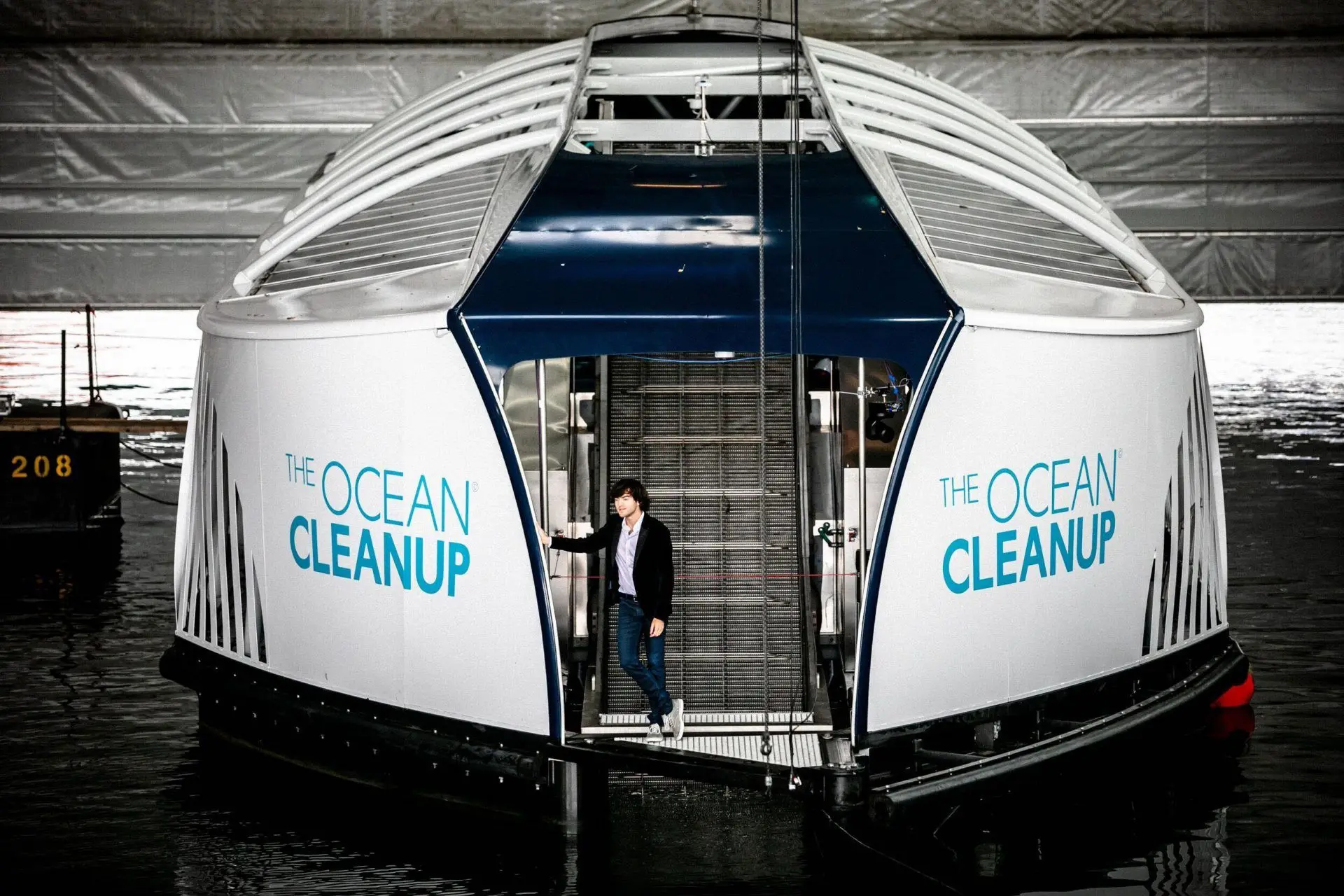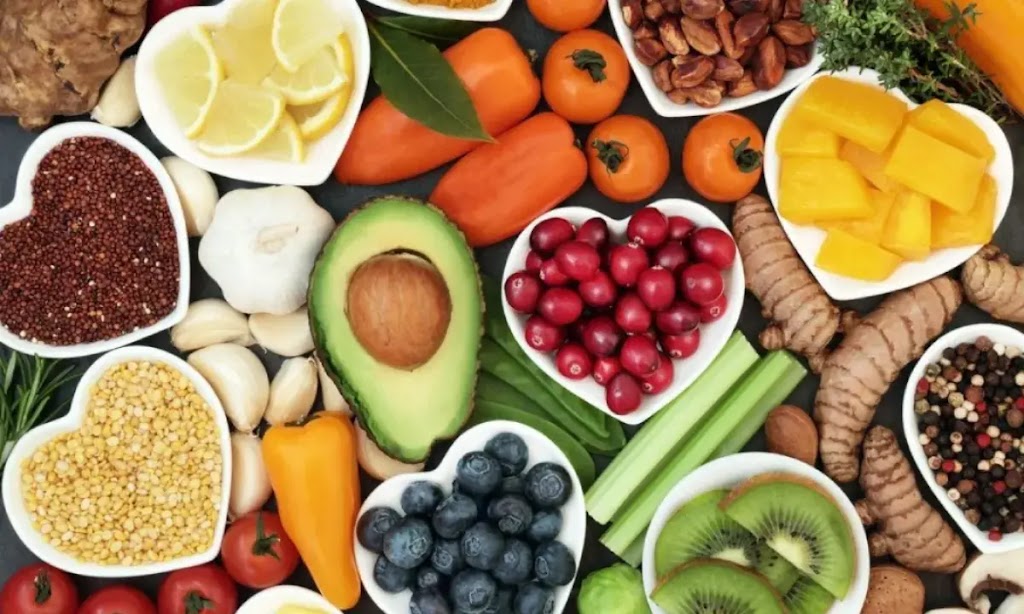It is now widely accepted that pollution of the oceans is a significant contributor to the current global climate problem. Long-term exposure to ocean water causes the plastic to degrade into microplastics, which in turn contaminate the ocean’s fragile ecosystem.
Concerned about this problem, the non-profit group The Water Cleanup developed innovative equipment to concentrate all the trash in the ocean and haul it out for recycling.
A new video from The Ocean Cleanup demonstrates the remarkable efficiency with which they are addressing the Great Pacific Garbage Patch. The film highlights the organization’s powerful equipment and claims that only 10 of them will significantly reduce the trash in the sea.
The Ocean Clean Up
The Ocean Cleanup, a non-profit group founded in 2013 by entrepreneur Boyan Slat, has been doing what it calls “the biggest cleanup in history.” Over the course of five years, this enormous, two-pronged initiative removed half of the plastic in the Great Pacific Garbage Patch (about 40,000 metric tons). Further, they took action upstream to stem the tide of trash into the river.
The organization estimates that by 2040 it will be able to remove 90% of all plastic ocean debris if it deploys sufficient fleets of devices in all five ocean gyres and reduces the intake from rivers.
When on vacation in Greece, Slat saw that there was more trash than fish while scuba diving, inspiring him to start the first stage of the project: cleaning the seas. He learned more about the issue, began developing a passive cleanup solution while still in school, and ultimately launched The Ocean Cleanup.
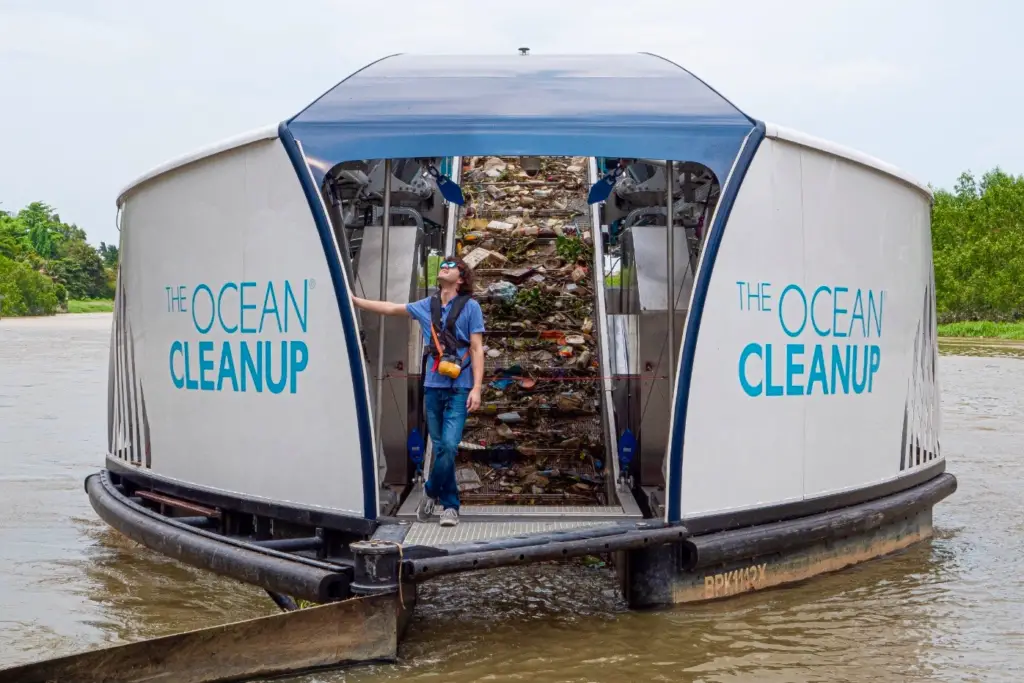
Slat’s passive ocean-based cleaning system consists of a floating plastic tube about the length of a football field, which is hung at the water’s surface. Below that, a nylon skirt directs trash into a retention device that gathers up the plastic.
What is the great pacific garbage patch?
There are five offshore plastic accumulation zones throughout the globe, with the Great Pacific Garbage Patch (GPGP) being the biggest. Situated directly between the two states of Hawaii and California.
Plastic Accumulation
Between 1.15 and 2.41 million metric tons of plastic are believed to reach the ocean each year through rivers. More than half of this trash will float once it reaches the ocean since its density is lower than that of water.
Annually, 1.15–2.41 million metric tons of plastic are dumped into the sea.
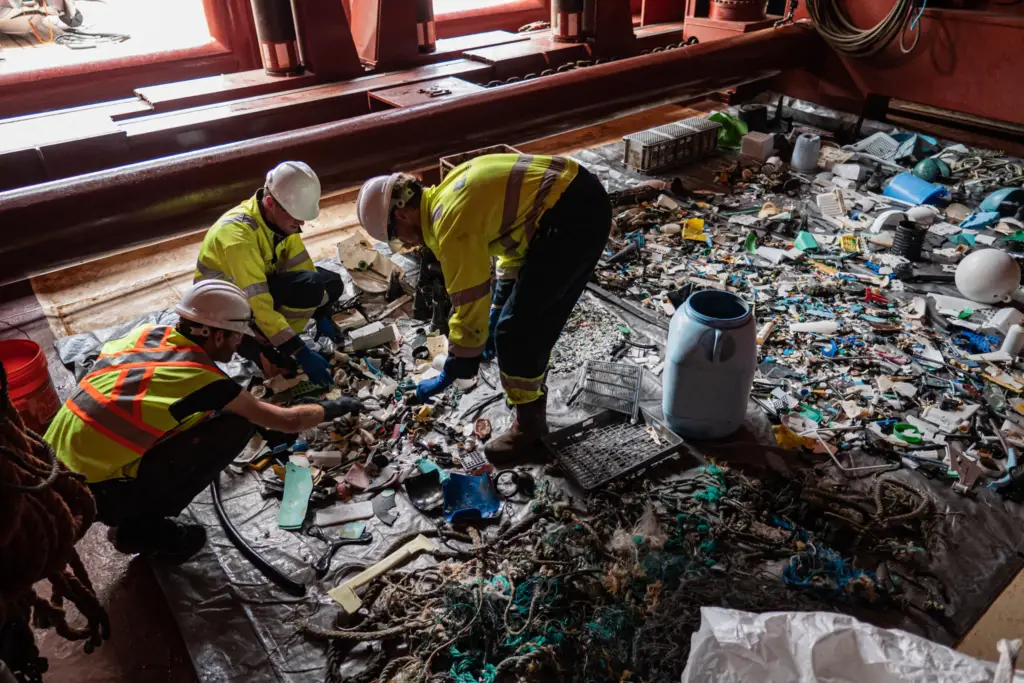
Longer distances may be travelled with the stronger, more buoyant plastics due to their resilience in the sea. They stay near the surface of the water and drift offshore, where they are carried by convergent currents and eventually accumulate to form a patch.
These plastics will likely remain in the gyre until they are broken down by the sun, waves, and marine life into tiny microplastics. The percentage of microplastics in the Great Pacific Garbage Patch is expected to rise as more and more plastics are tossed into the environment.
Location
The position and form of the GPGP are continuously altering as a result of seasonal and interannual variations in winds and currents. The only floating items that were likely to stay within the patch were those that were mostly affected by currents and less by winds.
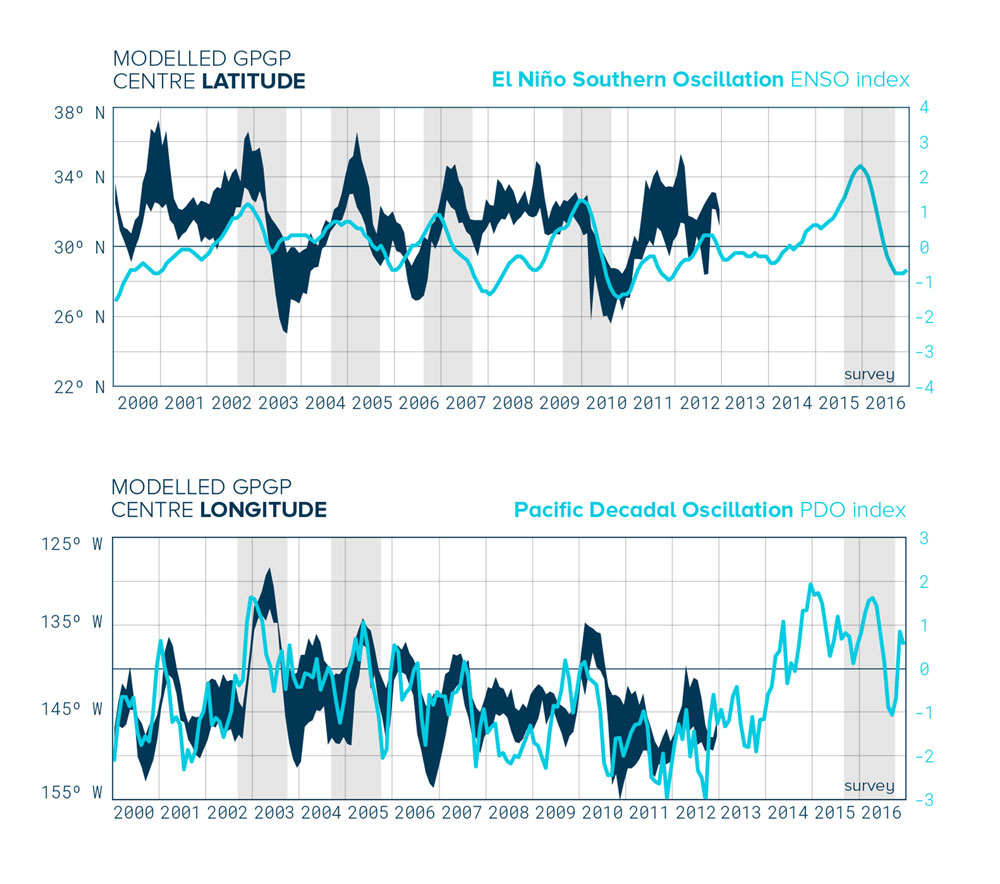
The researchers were able to track the position of the patch by modelling concentration levels in the North Pacific, showing substantial seasonal and interannual fluctuations. The patch often revolves about 32°N and 145°W. However, depending on the year, the researchers saw a seasonal movement from west to east and significant differences in latitude (from north to south).
Estimation of Size
About twice the size of Texas and three times that of France, the GPGP spans an estimated 1.6 million square kilometres.
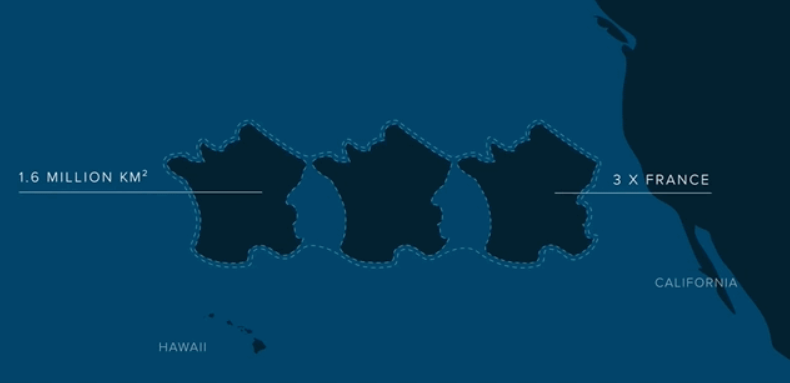
The scientific team behind this study used the most comprehensive sampling
strategy ever orchestrated to arrive at this conclusion.
Thirty vessels, 652 surface nets, and two flights over the area were used to collect aerial photographs of the trash.
A sampling at different locations within the same time period allowed a more accurate estimate of the size of the patch and the plastic drifting in it.
What’s happening?
Since launching its initial wave of trash-eating robots, The Ocean Cleanup has come a long way. The ship is in the process of upgrading its first barrier, System 002, to the more robust System 003, which will be able to gather plastic up to ten times quicker.
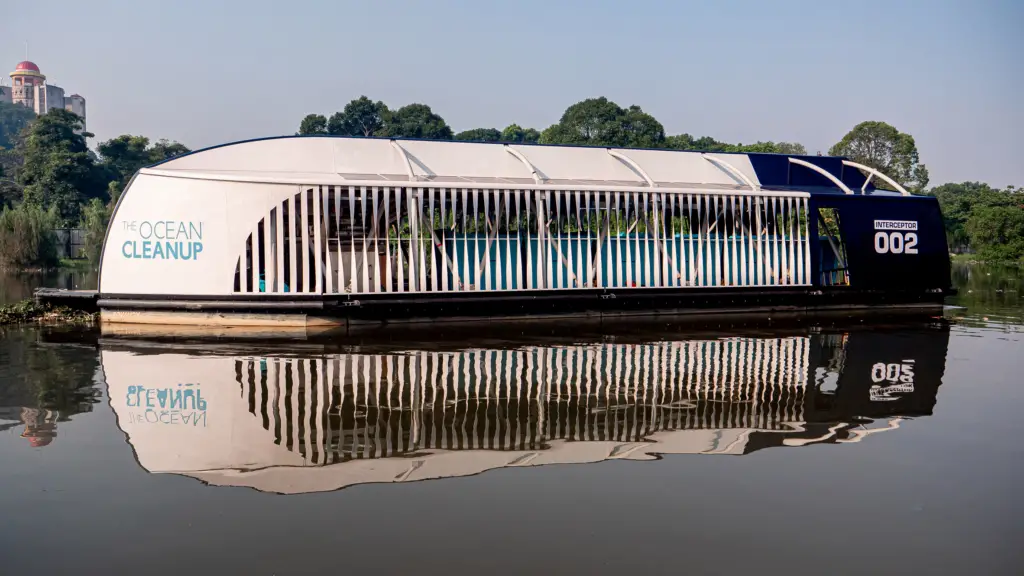
The length of these brand-new machines will be 8,200 feet (or 2,500 meters), forming a U shape. Towboats will drag them through the water, where the 13-foot-deep (4-meter) skirt will collect plastic debris before being discharged on land.
It is anticipated that the bigger system would reduce the cost per kilogram of plastic debris collected from the seas, making the cleaning more efficient and cost-effective. The Ocean Cleanup team’s most recent estimates suggest that ten barriers built on the System 003 design would be sufficient to collect all 100,000 tonnes of plastic from the Great Pacific Garbage Patch.
Check out the video below to see how this might work in practice. Throughout the piece, important technical details are mixed in, like as the use of drones to pinpoint plastic hotspots in the patch, effectively portraying the scope of the issue and the manner The Ocean Cleanup hopes to fix it. Read on to find out more.
Research Expeditions
Since the 1970s, researchers have been researching this region, often by pulling a tiny sample net through the debris. This approach exhibited a bias in favour of smaller items and did not provide much insight into the bigger ones and, thus, the GPGP’s overall scope.
The Ocean Cleanup researchers conducted a number of data-gathering trips over a three-year period.
This included the Multi-Level-Trawl expedition, where they examined the depth at which buoyant plastic debris may be distributed vertically, the Mega Expedition, which involved using multiple vessels to trawl the patch simultaneously; and the Aerial Expedition, which involved using a plane to fly at a low altitude and observe the debris from above.
Interceptor: The River Cleaning Solution
According to research done by Ocean Cleanup, 1,000 rivers are to blame for over 80% of the river-borne plastic debris that ends up in the ocean. By 2025, the group hopes to have addressed every one of them.
The Interceptor, an automated debris filter and extraction device that can function in most of the world’s top polluted rivers, is the cleanup technology used in the second phase of the project.
Harnessing Natural Forces to Clean the Great Pacific Garbage Patch
Traditional techniques like nets and ships would need too much energy, would cost billions of dollars, and would take a very long time to actively clean up the Great Pacific Garbage Patch.
The Ocean Cleanup’s passive technology, which is propelled by the wind, waves, and current through trash patches, may remove half of the plastic waste in only five years for a small fraction of the cost. The system’s capacity to survive dangerous maritime settings is also increased by this passive harnessing of natural forces.
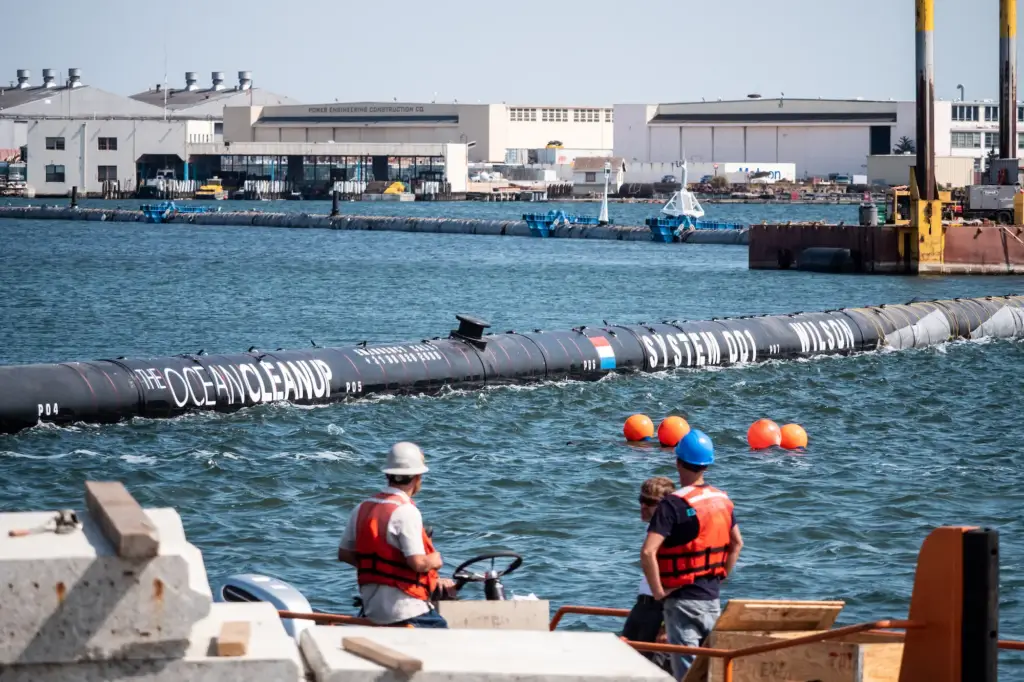
Some experts had doubts about the design’s viability when Slat originally presented it. The Ocean Cleanup, however, earned millions via a crowdfunding effort and further millions from other donors when Slat dropped out of university to pursue the project.
In the founder’s own words, “the whole reason why The Ocean Cleanup exists, why we’re doing this cleanup, is to maximize the amount of good that we do. And there are two sides to that, there is maximizing the performance of the cleanup, but also minimizing any possible negative side effect that the operation may have, which relates to the emissions of the vessels as well as possible encounters with marine life.”
IMPACT ON WILDLIFE
The oceans have grown more contaminated with plastic. Animals mistake plastic for food because of its size and colour, which results in malnutrition. Plastic also offers entanglement concerns and endangers animals’ behaviour, health, and very life.
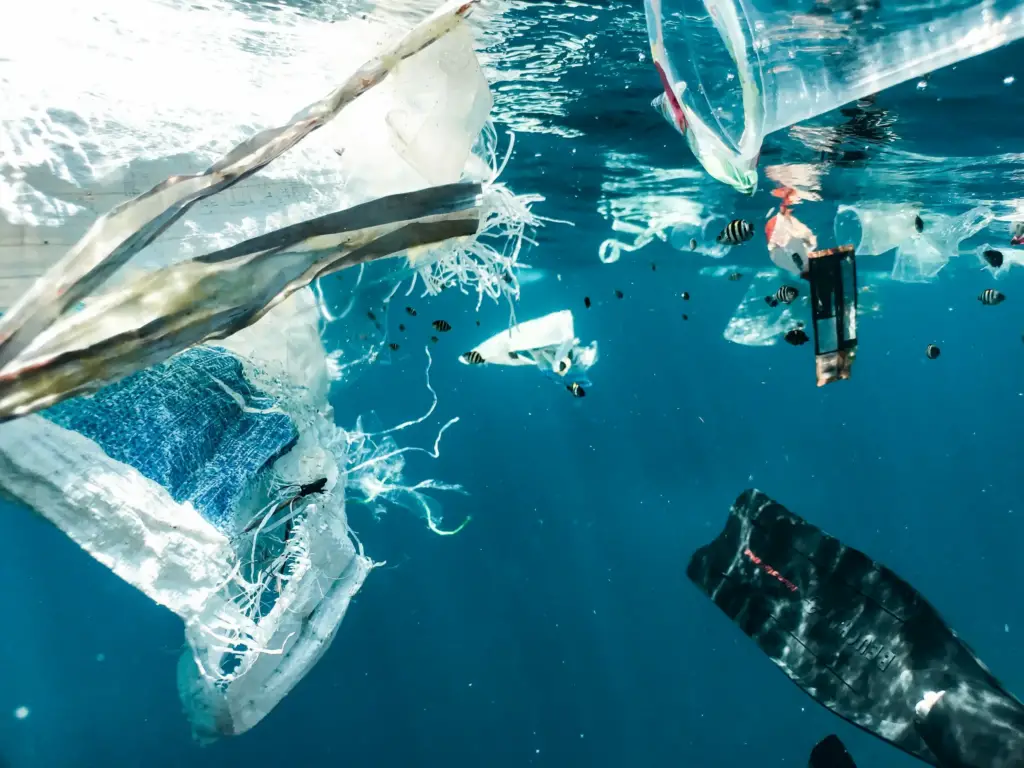
According to studies, around 700 species have come into contact with marine waste, and 92% of these encounters include plastic. Seventeen percent of all species are affected by plastic, according to the IUCN (International Union for the Conservation of Nature) Red List of Threatened Species.
Entanglement of Marine Life
Fishing nets makeup 46% of the mass in the GPGP and may be deadly for animals who swim into them or crash into them and are unable to escape the net. The marine life that comes into contact with these abandoned nets, often known as ghost nets, frequently perishes.
IMPACT ON HUMANS AND SOCIETY
The plastic that winds up in the ocean has the potential to poison the food supply for humans. Major costs have been incurred in the fight to clean up and eliminate trash from the ocean.

The annual economic consequences attributable to marine plastic are projected to be between $6 and $ 19 billion USD, according to research done in partnership with Deloitte. The expenses come from the damage done to the tourist industry, fish and aquaculture industries, and (public) cleaning efforts. Since addressing the effects of plastic pollution downstream is more expensive, preventing it upstream is preferable. Check out our explorable map for additional info.
Ending Notes
According to researchers, the Great Pacific Garbage Patch is growing as more and more rubbish is added to it. Some claim that since the 1940s, it has multiplied by ten every ten years. This continual and growing presence in the region is said to be progressively destroying marine life. It feels so great to see non-profit organizations like this coming up with a big ambition to do good in the world. Their dedication and technological work front gives great estimates for project success. We from engineering exploration wish them the best of luck and will be keeping an eye on such great initiatives.

